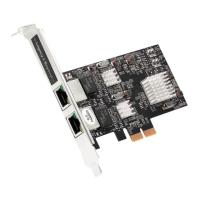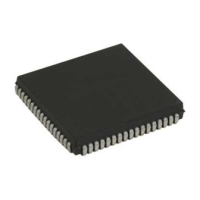Product Specifications
13 Thermal and Mechanical Design Guidelines
2.3.1 Thermal Design Power (TDP)
2.3.1.1 Definition
Thermal design power (TDP) is the estimated power dissipation of the (G)MCH based
on normal operating conditions including V
CC
and T
C-MAX
while executing real worst-
case power intensive applications. This value is based on expected worst-case data
traffic patterns and usage of the chipset and does not represent a specific software
application. TDP attempts to account for expected increases in power due to variation
in (G)MCH current consumption due to silicon process variation, processor speed,
DRAM capacitive bus loading and temperature. However, since these variations are
subject to change, there is no assurance that all applications will not exceed the TDP
value.
The system designer must design a thermal solution for the (G)MCH such that it
maintains T
C
below T
C-MAX
for a sustained power level equal to TDP. Note that the
T
C-MAX
specification is a requirement for a sustained power level equal to TDP, and that
the case temperature must be maintained at temperatures less than T
C-MAX
when
operating at power levels less than TDP. This temperature compliance is to ensure
component reliability. The TDP value can be used for thermal design if the thermal
protection mechanisms are enabled. The (G)MCH incorporate a hardware-based fail-
safe mechanism to keep the product temperature in spec in the event of unusually
strenuous usage above the TDP power.
2.3.2 TDP Prediction Methodology
2.3.2.1 Pre-Silicon
To determine TDP for pre-silicon products in development, it is necessary to make
estimates based on analytical models. These models rely on knowledge of the past
(G)MCH power dissipation behavior along with knowledge of planned architectural and
process changes that may affect TDP. Knowledge of applications available today and
their ability to stress various aspects of the (G)MCH is also included in the model. The
projection for TDP assumes (G)MCH operation at T
C-MAX
. The TDP estimate also
accounts for normal manufacturing process variation.
2.3.2.2 Post-Silicon
Once the product silicon is available, post-silicon validation is performed to assess the
validity of pre-silicon projections. Testing is performed on both commercially available
and synthetic high power applications and power data is compared to pre-silicon
estimates. Post-silicon validation may result in a small adjustment to pre-silicon TDP
estimates.

